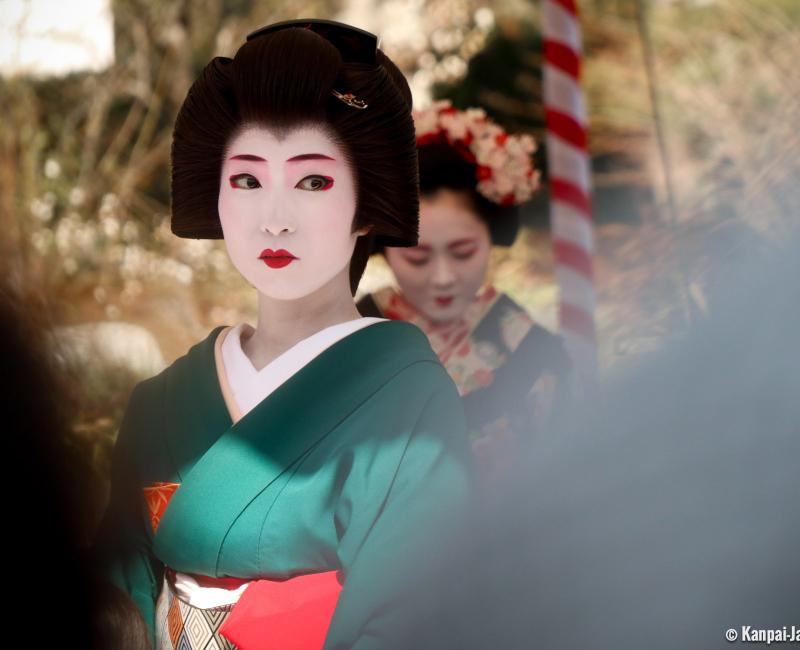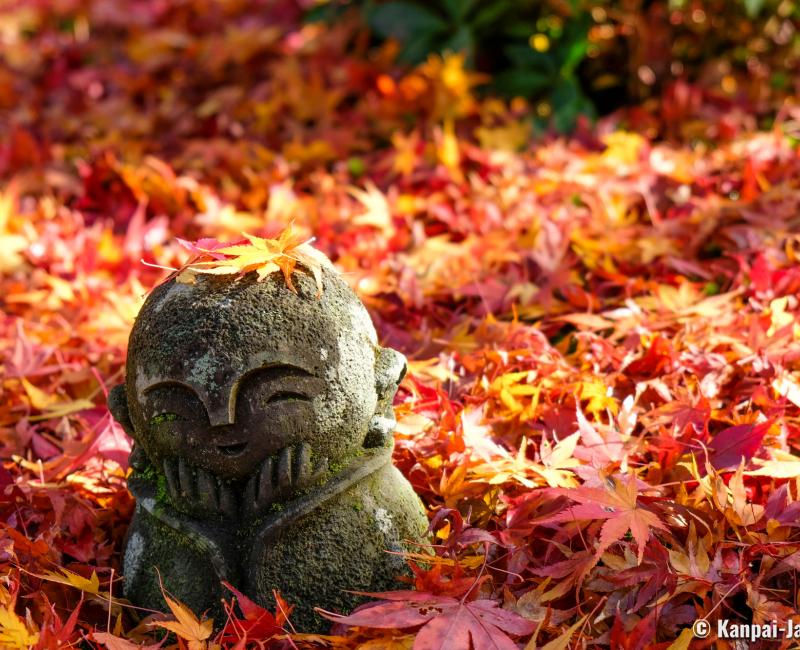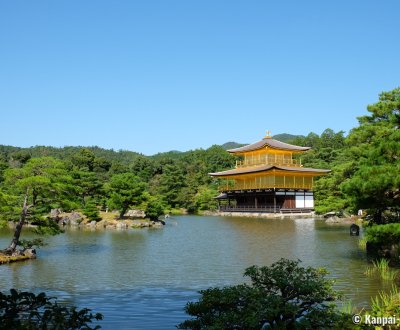Kyoto
The Magical Ancient Capital of Japan
Kyoto is a large city of the Kansai area, located in the south-west of Lake Biwa. Once also named Heian-kyo, the former imperial capital of Japan displays an abundance of shrines, historical temples, Zen gardens and monuments inscribed in the Unesco World Heritage List. It is often considered the archipelago’s most iconic traditional city.
Kyoto was the former imperial capital of Japan until the Meiji Restoration in 1868, and was named Heian-kyo in its early days. Kyoto is one of the favorite cities of travelers in Japan.
Despite its modest size compared to other neighboring cities of the Kansai area and with fewer than one and half million inhabitants living in just over 300 square miles (800 km²), Kyoto primarily attracts visitors thanks to its traditional environment and its countless temples, shrines and Japanese gardens (about two thousand!) that have shaped its architecture as well as its identity.
Considered the cultural capital of Japan, it is home to many sites inscribed on the UNESCO World Heritage List and is loved by tourists who come every year in increasing numbers. In 2019, they were 87,9 million sightseers to discover Kyoto, compared to the approximately 56,84 million in 2015, of all nationalities, and they spent one trillion Yens (~6.4 billions dollars), a raise of 30% in regard to the previous year.
In fall 🍁 2020, Kyoto was ranked among the world’s best cities by the highly respected Condé Nast Traveler magazine, after 4 years of domination by Tokyo.

A museum-city for tourists?
Interestingly, in 2014 more than half of foreign visitors in Kyoto were Westerners (North Americans or Europeans), a proportion that is twice the national average in Japan.
On a side note, Kyoto and Paris have signed a Pact of Friendship in 1958.
Since 2015, the city has undertaken long-expected and commendable works and developments to the benefit of residents as well as tourists who are now extremely numerous:
- On the bus network with extension of the schedules and of the routes for some lines,
- Unblocking traffic in the city center by narrowing the ways solely dedicated to motor vehicles (cars, bus and taxis),
- Creation of bicycle paths and parking spaces (to reduce carbon emissions as well).
However over the last years, the population and the municipality have been complaining about the negative aspects of the spectacular touristic boom. The sightseeing influx indeed tends to overwhelm a city that is already dense, and unable to spread further, with the risk of making it lose some of its traditional atmosphere.
With an accumulated debt amounting to ¥860 billion (~5.5 billions dollars) in 2020, Kyoto is facing crucial financial problems that worsened with the loss of the international tourists’ income during the Coronavirus 🦠 pandemic. As the bankruptcy risk is real, Kyoto’s mayor Daisaku Kadokawa has announced drastic budget cuts in the administrative services to be implemented from 2021 to 2025. The city is trying to attract companies, a younger working population as well as raise more taxes, especially from temples that are currently exempted.
Follow the pace of Kyoto’s inhabitants during your stay
To better enjoy the city, we recommend adapting to the rhythm of its inhabitants and adopt some of their habits to avoid sightseers’ crowds during your visits, such as:
- Visit the most popular touristic spot outside peak hours, that is to say, as soon as sunrise for the places opening this early, or one hour before closing time,
- Choose alternate itineraries such as the cycling paths running towards the north of Kyoto along the Kamo-gawa River, or the hiking trails crossing the mountains around the city and giving access to wonderful temples and shrines,
- Wander in the residential neighborhoods away from the touristic hubs of the city and discover sites that are smaller but preserved from mass-tourism,
- Book a ticket for a theater play or an odori dance performance by Kyoto’s Geisha (maiko and geiko) in one of the iconic theaters of the city (Minami-za, Kaburenjo, Shunju-za, Gion Kaikan theaters),
- Attend a traditional tea ceremony and enjoy a matcha green tea with the proper etiquette,
- Place a reservation in a lovely tearoom to enjoy wagashi traditional confectioneries and other seasonal sweets.
The accommodation’s location also plays a large part in the enjoyment of your stay and should be chosen considering the intended visits and the ambiance expected at night.
How to travel in the city?
Traveling in Kyoto is always a difficult matter. There is no ideal transportation method, and we recommend combining or using alternatively several of them, depending on the visited areas. Bus transportation is nonetheless the most convenient, but the most central lines are overcrowded during holidays periods. There are only two subway 🚇 lines in Kyoto, and they have not been designed to serve the touristic center. Many taxis patrol the streets and avenues, but traffic jams are frequent at rush hours.
We don’t recommend renting a car 🚙, unless having found beforehand a dedicated parking space, be it at the accommodation or at the different places you would like to visit. Those in good physical shape may choose riding a bicycle, which is quite pleasant along the rivers but can be very tiring when going up to the heights of the city. Also, be aware that some behaviors usually tolerated throughout Japan are forbidden in Kyoto’s center, such as riding a bicycle on the sidewalks.

Top destinations in Kyoto
Despite an important touristic boom since the middle of the 2010s, Kyoto remains a unique destination and a must-see for anyone discovering Japan. The charm of its religious and historical architecture is to be found at every street corner. The secret and aristocratic power of the former imperial capital is still present in the culture and craftsmanship, two fields dear to the city and its inhabitants.
Among the must-sees in Kyoto, the following short list can help deciding on a first selection:
- Temples: Kinkaku-ji, Ginkaku-ji, Kiyomizu-dera, Eikan-do, Genko-an, Enko-ji, Konkai Komyo-ji, Daigo-ji,
- Shrines: Fushimi Inari Taisha, Heian-jingu, Kitano Tenmangu, Shimogamo,
- Japanese gardens: Kokedera Moss Garden, dry gardens of the Shoden-ji and Entsu-ji, Murin-an, Tenju-an,
- Villas: Shugaku-in, Katsura, Okochi Sanso and the Old Mitsui Family Shimogamo Villa,
- Museums: Kyoto International Manga Museum, Kyoto National Museum, Gekkeikan Okura Sake Museum, Kawai Kanjiro’s House,
- Hikes: Kurama / Kibune, Takao, Ohara, Yoshimine-dera, and,
- Unique places: Gion and the various Geisha neighborhoods of Kyoto (hanamachi), Pontocho Alley, Teramachi and Shinkyogoku shopping arcades, the modern Kyoto station and Arashiyama Bamboo Grove in the western suburb.
Discover Kyoto and its endless heritage thanks to our numerous visits listed by districts of the city. Let the past-time Kyoto mesmerize your eyes, while continuing to honor its traditions along with the passing of the seasons.



